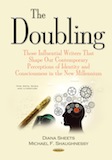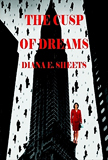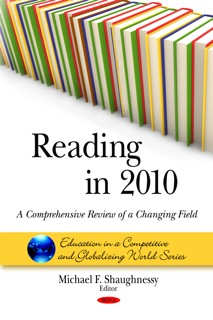Norman Mailer: "History as a Novel/The Novel as History," Part II
Copyright © 2008 by Diana E. Sheets
II
How, then, would Mailer clarify “a nation’s vision of itself” within a single work? (CC, 98) How would he achieve his goal of “a revolution in the consciousness of our time” (Advertisements for Myself, G.P. Putnam’s Sons, 1959, 17) through his “task of explaining
*
The opportunity to present the American story anew came with the birth of New Journalism in the early sixties. Truman Capote, Jimmy Breslin, Tom Wolfe, Norman Mailer, Joan Dideon, Hunter Thompson, Gay Talese, and their brethren refused to cede the
Though Mailer was obsessed, as John Walsh noted in his “An elegy for the great American novel,” with bagging “the big one” (The Independent 14 November 2007, sec. Extra: 2), it was in Mailer’s “nonfiction novels” that he rendered most powerfully the breath and dimension of our social, political, and cultural landscape. Consequently, Part II will consider three of his most captivating stories: The Armies of the Night: History as a Novel/The Novel as History (1968); Of a Fire on the Moon (1969); and The Executioner’s Song (1979).
Winner of the Pulitzer Prize for nonfiction and the National Book Award for “Arts & Letters” in 1968, The Armies of the Night presents the story of the 1967 March on the Pentagon to protest the Vietnam War. It was Mailer’s first sustained endeavor to create a “nonfiction novel” shaped by his interpretation of
Book I of The Armies of the Night—“History as a Novel: The Steps of The Pentagon”—was undertaken as an assignment for Harper’s Magazine. Mailer fuses omniscient narrative with a myopic third person perspective so that the reader becomes embedded in the consciousness of the character “Norman Mailer.” The reader experiences Mailer’s initial reluctance to participate and enlist his fame to the cause. Book l unfolds in classic scene-by-scene construction. The reader, embedded in Mailer’s consciousness, is a voyeur experiencing the mind-think of our “hero” as he proffers his reasonable and unreasonable assessments of political activists, organizers, fellow speakers and celebrities, most notably poet Robert Lowell, his erstwhile rival. We cringe and then laugh with a measure of sympathy, pity, and disgust as Mailer misbehaves, gets drunk, and inadvertently pees on the floor of a public restroom at the Ambassador Theatre that Thursday evening. We witness his late arrival to the stage. We watch as he insists on serving as master of ceremonies only to denigrate the occasion and its participants through his inebriated buffoonery. We travel with the demonstrators that Friday as they march to the Department of Justice where draft cards are delivered to the Office of the Attorney General as a gesture of protest against serving in
We witness the clash of the “armies”—both those for and against the government—that Saturday in the March on the Pentagon. We participate in Mailer’s arrest, his brief incarceration, and his release that permits him to return quickly to
If Book I is idiosyncratic oral history with “a central character who is not central to the event . . . .” (The Armies of the Night, 67), Book II, “The Novel as History: The Battle of the Pentagon” shifts perspective. It is the “real or true novel—no less!—presented in the style of a history” (The Armies of the Night, 284). The novelist Mailer has passed the baton to the fictive historian. The account is depersonalized and at a remove. It provides a panoramic perspective of the March on the Pentagon, focusing on the key players, the antiwar protestors, the governmental authorities, and the students (middle class) and the soldiers (working class). The focus is on the left, the liberals, and the academics protesting the war. Generational differences are evident, although these fade away as the “tender, drug-vitiated jargon-mired children” (The Armies of the Night, 311, Norman Mailer Revisited, 120-3, 125) risk personal harm from the soldiers. There is rebellion, the threat of violence. Existential nihilism is replaced by political tenacity as the protestors resist the authorities.
What may we conclude about The Armies of the Night? Book I is cheeky, oversized, outrageous, egocentric, yet compelling, albeit subjective. Book II provides an account with our nose pressed against the window of history, filtered and marginally detached from the solipsistic prism of Mailer’s self-consciousness. It matters not whether the reader agrees with Mailer’s interpretation of events surrounding the March on the Pentagon or, for that matter, his perception regarding the folly of the Vietnam War. For anyone wanting to experience the sixties as it was lived by the generation that embraced the counter-culture and whose values now reign supreme, The Armies of the Night is a must read. To do so erases nearly forty years of ex-post-hoc rationalization as the reader instantaneously is transported back in time. The Armies of the Night is a story of generational rebellion with Mailer as one of its aging leaders. It shows the demise of authority and traditional values in favor of cultural relativism. Foundational truths—those classical virtues—have been replaced by the triumphant self. And self, unmoored from objective reality and dispassionate historical perspective, flounders. Relativism begets narcissism. The Armies of the Night pinpoints that juncture when Western Civilization dematerializes only to be replaced by an interior landscape suffused with pop culture, now the wellspring of
*
The second of Mailer’s “nonfiction novels” we shall consider is Of a Fire on the Moon (1969). It is an account of the 1969 Apollo moon landing. It is, arguably, Mailer’s most underrated work. As with The Armies of the Night, the chief character is Norman Mailer, now referred to by his astrological sign, Aquarius. Planet Uranus, ruler of the sign Aquarius, is conjoined with Pluto, ruler of the masses. Their union is a harbinger for radical change.
However, the transformation that occurs within Of a Fire on the Moon is not the triumph of the counter-culture but the demise of the romantic poet in the face of the cosmic realignment of the universe. Aquarius has arrived at NASA to report on the upcoming moon landing. Our narrator once dreamt of becoming an aeronautical engineer. Now our hero is a romantic poet inhabiting the guise of the novelist-cum-journalist. He travels to NASA wary of Big Government, Big Science, and the WASP establishment that oversees the space center. For Aquarius, WASPs are “the most Faustian, barbaric, draconian, progress-oriented, and root-destroying people on earth. They had divorced themselves from odor in order to dominate time, and thereby see if they were able to deliver themselves from death!” (Of a Fire on the Moon, Little, Brown, 1970, 10) NASA is the embodiment of WASP power characterized by technological brawn absent spirituality.
Aquarius, our romantic hero, challenges the wisdom of landing on the moon. He yearns to uncover the deficiencies at NASA that will demonstrate that human artistry trumps aeronautical expertise. As with the character “Mailer” in The Armies of the Night, our Aquarius is a narcissist. He is used to navigating his own constellation, what others have come to characterize as consciousness. Rarely do individuals or events conspire to challenge his
Nevertheless, Aquarius is under duress. He is only one of hundreds of reporters gathered at NASA to report on the back-story associated with the preparations for the moon landing. The first time he sees the astronauts is while attending a press conference. They are sequestered from interviewers by a glass partition as a precaution against infection. Indeed, Aquarius never personally interacts with them. The astronauts are always at a remove—whether behind a partition or wearing helmets as they head for the launch. They are watched on television screens whether on the moon or in quarantine on the carrier Hornet immediately following their successful landing (Alvin B. Kernan, The Imaginary Library,
Aeronautical engineering challenges the Cosmic Zen of Aquarius. Our poet hero cannot triumph over space-age technology. He is forced to acknowledge “why he was so irritated with everything and why he could not feel a thing. It was simple masculine envy. He too wanted to go up in the bird” (Of a Fire on the Moon, 97).
Alas, our Aquarius must watch the walk on the moon from a video screen while sitting in an auditorium with some five-hundred reporters. The image is blurry, roughhewn. The audience struggling to hear those fateful words, “That’s one small step for a man, one giant leap for mankind.” The images improve. The reporters watch Armstrong’s “hesitant loping gait” as he walks along the surface of the moon. They see Aldrin descend from the Lem. Both astronauts are over-padded, awkward, bulky. They are two ghostly figures whose motions resemble “kangaroo hops.” The American flag is planted on the surface of the moon. The audience applauds and gives a standing ovation. With the world as witness, President Nixon calls to congratulate the astronauts (121-2, 124-6, 128-9).
Ninety minutes later, the event had shrunk to ho-hum. Reporters leave before the footage has stopped transmitting. For Aquarius, “It was the event of his lifetime, and yet it had been a dull event . . . . Man had become a Herculean embodiment of the Vision, but the brain on top of the head was as small as a transistorized fist, and the chambers of the heart had shrunk to the dry hard seeds of some hybrid future” (130-131).
What might have been celebrated as a triumphant moment in America’s space program becomes, as Kernan notes in his masterly study, The Imaginary Library (“The Place of Poetry in the World,” 3-11), the end of the great romantic era, an age begun in the era of Doctor Johnson, some 250 years ago and now threatened with annihilation as our civilization approaches its cultural heliopause in this, the age of Aquarius. Our romantic poet proves no match against technological might. Not surprisingly, this “nonfiction novel” concludes with a burial by the sea. It is a lament, a dirge, the epilogue of humankind as we approach our terminus. Man, if he is to be revived at all, will become a cyborg.
If Tom Wolfe’s The Right Stuff (1979) is a celebration of American heroes, those pilots and astronauts who competed to break the sound barrier and explore the cosmos, Mailer’s Of a Fire on the Moon is the resistance, the reluctance, the braying voice of the Romantic Poet fearful that he will be unable to forestall scientific progress in an age when technology threatens to reduce humankind to carbon residue. The wonder of this book is to watch Mailer, the supreme egoist, shrink. As the story progresses, his prose dims. His diction becomes increasingly technocratic. Our Romantic Poet—imagine!—threatens to fade away. Mailer’s faint presence is particularly evident is Part II, “Apollo,” which represents some 276 pages and accounts for 58% of the book. The initial chapter, “The Psychology of Machines,” signifies the triumph of technology. By the time the reader begins Part III, “The Age of Aquarius,” the pages are steeped in melancholy. The reader is witnessing the last rays of light, rather than the dawning of a new era (Of a Fire on the Moon, 435).
And yet, perspectives alter with the passage of time. In 1969, when Of a Fire on the Moon was first published, science and technology, as represented by NASA, appeared omnipotent. We were a nation with functioning organizations. We understood power and the need for authority. Our institutions were managed by top-down leadership. True, all this was being challenged in the sixties, the “Age of Aquarius,” but the codes of conduct still held sway. The triumph of NASA showcased in Of a Fire on the Moon wanes in the decades that followed. In the aftermath of both shuttle disasters, NASA is struggling. Our national scientific laboratories devoted to fundamental research have been replaced by “Just-in-Time” development and ad-hoc approaches to combating terrorism. Big science, concerned with tackling the most challenging problems, is scrounging for revenue. The issue, these days, is less whether science will control our destiny than whether human endeavors—culturally, socially, and scientifically—will progress beyond incremental improvements to address our societal needs. So while Of a Fire on the Moon makes for a fascinating read of an age that is no longer, its pronouncements and misgivings concerning the omnipotence of the WASP stronghold—defined here as NASA—seem woefully misguided. These days, the menace is not so much science as the race to see if the technologies derived from science are sufficient to respond to the demands caused by an expanding global population that will be furiously competing for the increasingly limited supply of resources available (efficient energy, unadulterated food, untainted water, viable housing, efficient transportation, clean air, and uncontaminated soil).
*
Of all Mailer’s “nonfiction novels,” none was considered more literary than The Executioner’s Song (1979), winner of the 1980 Pulitzer Prize for Fiction. It was conceived as a Western “true life novel” that presents the story of the final nine months of Gary Gilmore’s life. It focuses not on his early childhood or his years of incarceration or even the events surrounding his trial but rather on the three-and-a-half months of freedom before he robbed and murdered two men, as well as the subsequent post-trial public spectacle culminating in Gilmore’s Death-Row Execution. This sprawling tale, one thousand-plus pages in its original hard-cover edition, is regarded by many critics as Mailer’s greatest literary achievement thanks, in part, to the extensive research undertaken for the book by Lawrence Schiller. For Elizabeth Hardwick, The Executioner’s Song is “the apotheosis of our flowering ‘oral literature.’” (Modern Critical Views: Norman Mailer, Edited by Harold Bloom.
Harold Bloom is more skeptical, acknowledging that it represents the “triumph of the tape recorder” (2) while dismissive of its literary substance. Indeed, Bloom suggests that Mailer’s greatest creative enterprise was the persona of Norman Mailer, that “lengthy, discontinuous, and perhaps canonical fiction” we refer to as Norman Mailer “because truly he is his own supreme fiction” (2).
As Robert Merrill noted in 1978 and the comments of Bloom above suggest, prior to the publication of The Executioner’s Song, despite having been elected to the National Institute of Arts and Letters (1967) and the American Academy of Arts and Sciences (1970), despite having won the 1969 Pulitzer Prize in general nonfiction and the 1969 National Book Award in “Arts & Letters” for The Armies of the Night, Norman Mailer was known more for his public notoriety than for his writerly achievements (Norman Mailer, Twayne Publishers, 1978, “Preface,” 9-13).
With the publication of The Executioner’s Song and its designation as a “literary novel,” Mailer’s reputation soared. By then, the literary distinctions between fiction and creative nonfiction had narrowed. Indeed, E.L. Doctorow noted, “There is no fiction or nonfiction as we commonly understand the distinction: there is only narrative” (Norman Mailer Revisited, 152 quoting from Newsweek).
Certainly since the publication of Truman Capote’s In Cold Blood (1965), which signaled the arrival of New Journalism and its embrace of novelistic techniques, the boundaries between nonfiction and fiction had become increasingly pliant. However, the root cause for the critics’ dismissal of Mailer’s work rested upon the assumption that literary fiction must not adhere too closely to stories depicting the real world. Describing events is, after all, journalism, a journeyman’s trade. History is journalism at one level of remove—a generation or more—that utilizes a wide range of sources. Fiction, so the thinking goes, must not sully itself with these quotidian events. Better to dwell on consciousness, that inner life of the characters, than to examine the known world. For reality begets violence and politics and carnage and all that is disturbingly “real.” For this reason, Norman Mailer and Tom Wolfe, rivals and natural sparing partners, were, nonetheless, allied in their struggle against the “literati” because of their conviction that literature obtains its significance through its engagement with the world. For both men “interiority,” divorced from reality, represents the null and the void.
Thankfully, Mailer’s stories offer a refreshing engagement with political and social events of his era. The three “nonfiction novels” under consideration have gained stature and significance over the years unlike so much of the literary “fluff” that has characterized high-brow fiction since the 1960s. If we accept that Mailer is a quintessentially unreliable narrator, it is also true that if a reader wants to revisit that era—the sixties and seventies when the counter-culture made its bid for supremacy and made every effort to lay waste to “the establishment”—Mailer is your man. The reader enters a time capsule and emerges “there” to experience it moment by moment. In presenting these stories, Mailer towers over all but a handful of his contemporaries. The man could see and he could write. He knew the value of incorporating his observations into his “nonfiction novels.” And we, as readers, should be eternally grateful.
The Executioner’s Song represents Mailer’s most sustained effort to present “a revolution in the consciousness of our time” as a means of furthering his “task of explaining
Mailer has provided us with a distinctly American story drenched in violence and suffused with countercultural vacuity. The “romance” between Gary Gilmore and Nicole Baker has no counterpart in literary fiction. It is real; it is messy; it offers no solace for readers hungering for emotional comfort or a conventional narrative. The people portrayed in Mailer’s story are forever in motion, their actions fueled by entropy. Truth and motivation have no axes. Unlike the characters in the novels of Henry James who possess a rich internal life, the consciousness of characters in The Executioner’s Song is best described as rudimentary stimulus response.
A comparison with Truman Capote’s In Cold Blood is revealing. Both “novels” recount senseless murders that conclude with Death-Row Executions. Both apply the methods of the New Journalism. However, Capote employs an omniscient style of narration that is almost neo-Victorian in its intent to persuade readers and provide a satisfying conclusion. Mailer, by contrast, has developed an approach in The Executioner’s Song that represents a major departure from his earlier writing. His authorial voice, his bravura, his solipsism, and his idiosyncratic social and political discourse have all been excised. Whereas Capote presents a sympathetic narrative of Perry Smith that critics suggest verges on fabrication, Mailer has rendered a complex and nuanced portrait of Gary Gilmore that defies reductive analysis (154-6, 158). The Execution’s Song reflects the lives and speech patterns of its characters. Rarely has a novel written in third-person rendered such an authentic “voice” so attuned to story. One example will suffice.
Nicole spent the night at her great-grandmother’s house where he would never think of looking for her. In the morning, she went back to her mother’s, and
Given the cast of characters and the nearly endless digressions, a synopsis of The Executioner’s Song becomes almost futile. What matters is the existential chaos—actions undertaken with barely a conscious thought—presented against an unforgiving Western landscape. Here is a new-age gothic Western drenched in blood and propelled by anomie. It is Norman Mailer’s most ambitious attempt to create the Great American Novel.









